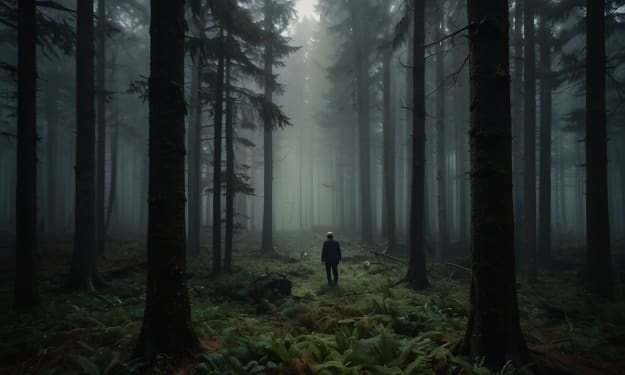A Filmmaker's Guide to: Gothic Horror
Film Studies (Pt.40)

In this chapter of ‘the filmmaker’s guide’ we’re actually going to be learning about literature and film together. I understand that many of you are sitting in university during difficult times and finding it increasingly hard to study and I understand that many of you who are not at university or not planning on it are possibly stuck of what to do, need a break or even need to catch up on learning film before you get to the next level. This guide will be brief but will also contain: new vocabulary, concepts and theories, films to watch and we will be exploring something taboo until now in the ‘filmmaker’s guide’ - academia (abyss opens). Each article will explore a different concept of film, philosophy, literature or bibliography/filmography etc. in order to give you something new to learn each time we see each other. You can use some of the words amongst family and friends to sound clever or you can get back to me (email in bio) and tell me how you’re doing. So, strap in and prepare for the filmmaker’s guide to film studies because it is going to be one wild ride.
Gothic Horror

What is it?
Part of the larger 'gothic' which explores themes such as existence, death, the grotesque and monstrosity. It is known for being particularly dark and frightening and mostly concerns some bigger metaphor overall.
Literature concerning gothic horror is some of the most famous literature around. Books such as "Frankenstein" by Mary Shelley and "Dracula" by Bram Stoker are amongst the most recognisable and most adapted into film. Other books include but are not limited to:
- "The Monk" by Matthew Lewis
- "The Picture of Dorian Gray" by Oscar Wilde
- "The Turn of the Screw" by Henry James
- "The Phantom of the Opera" by Gaston Leroux
- "The Fall of the House of Usher" by Edgar Allan Poe
What about in film?

In film, gothic horror is not hard to find as it is and has since become one of the most explored genres in all of cinematic history. It began in the German Expressionist era and moved forward from there. With films exploring death, ritualism and monstrosity such as: "The Cabinet of Dr. Caligari" (1920) and "Nosferatu" (1922) films such as "Psycho" (1960) and "The Birds" (1963) would seek to modernise and adapt the genre in order to suit an audience that was ever-changing and possibly, becoming younger and younger with the end of the war.
By the 1970s and 80s, gothic horror had merged with Sci-Fi to create an unholy alliance of monster and being from another planet. Beginning with the gothic themes of death and resistance to tyranny explored by Stanley Kubrick in his film "2001: A Space Odyssey" (1968) and moving through to the similar themes explored in his next big film "The Shining" (1980), Kubrick created not only a modernisation of gothic horror, but brought the genres together as well.

Gothic horror though, has been falling back on itself with modern films now exploring the core basics of the genre. With films in James Wan's "Conjuring" Universe looking at the themes of the supernatural and paranormal, regularly explored in older, darker gothic films. Obviously, we have films like "The Exorcist" by William Freidkin which did the same, but no era to fall back on the basics of gothic horror has been as popular as the one we had been through in the years 2005 through to about 2015. Everything is rearranging and yet, gothic horror has stayed entirely the same. It has become one with itself yet again.
Let's have a look at some further reading you can do on the topic in order to widen the scope on gothic horror. I have provided films on both books and literary cultures in order to help with this process.
Further Reading:
- Hogle, J.E (2002). The Cambridge Companion to Gothic Fiction. UK: Cambridge University Press.
- Jackson, K (2013). Nosferatu (1922): eine Symphonie des Grauens (BFI Film Classics). UK: British Film Institute Publications.
- John, J (2019). The Oxford Handbook of Victorian Literary Culture. UK: Oxford University Press.
- Robinson, D (2013). Das Cabinet des Dr. Caligari (BFI Film Classics). UK: British Film Institute Publications.
- Rodensky, L (2016). The Oxford Handbook of the Victorian Novel. UK: Oxford University Press.
About the Creator
Annie Kapur
200K+ Reads on Vocal.
English Lecturer
🎓Literature & Writing (B.A)
🎓Film & Writing (M.A)
🎓Secondary English Education (PgDipEd) (QTS)
📍Birmingham, UK






Comments
There are no comments for this story
Be the first to respond and start the conversation.